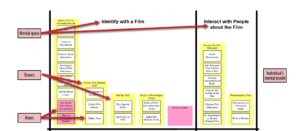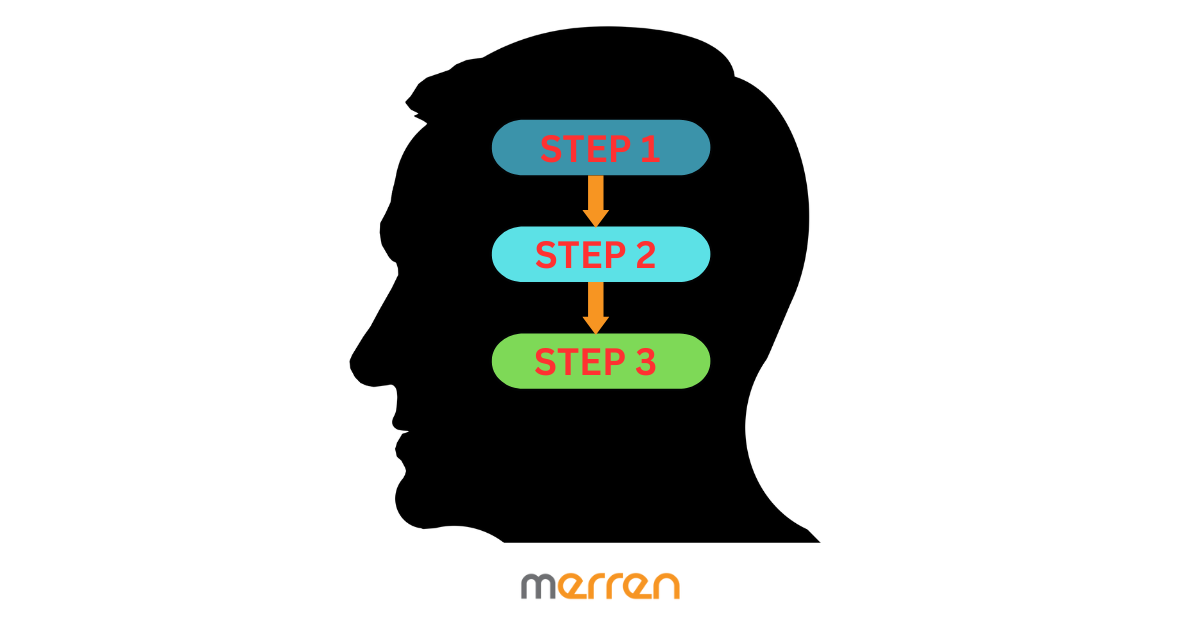Mental model is a person’s thought process on how the environment around them works. It has a psychological attachment that is built on beliefs, assumptions and perceptions. This includes past experiences of how a system functions. However, there are scenarios where some functions may not always work as expected in the real world. In this blog, we will try to understand the mental model diagram and how it can affect or change the flow of user experience or UX.
What is A Mental Model?
A mental model is an explanation of how something works and is based on generalizations and analogies from experience. It indicates a person’s thought process on how the world words with relation to their frame of reality. However, the mental model allows us to predict certain functions. They are still very unique and different for each user depending on what stimulus the user has been exposed to. It differs based on beliefs, experiences and point of view. In the real world, some functions may not equate with what you might have believed.
Multiple industries including business and software, technology, finance and banking, FMCG goods use the mental models.
When certain instructions do not match the user’s mental model, people feel bad for making mistakes. To them, it might seem that the system is broken but this model is subject to change through different scenarios. This can also affect the perceived value.
Segregating the mental model diagram
Users spend a lot of time browsing through different websites and other applications. This makes them form an opinion over a pattern they are familiar with. How a person will perceive your website or application depends on the information they have gathered from other websites. A diagram can denote the technical process of how a system works or a more efficient workflow. If a UX designer does not adhere or cater to the mental model expectations accordingly, new users might get confused or feel lost.
There are three basic levels of the diagram.

Boxes
Boxes are building blocks that are small squares. They contain a person’s thoughts, reactions and guiding principles. Multiple boxes make up a tower. Earlier, the boxes were named as tasks but now, it indicates more of a physical action taken based on a stimulus.
Towers
Towers are a collection of multiple boxes systematically placed on top of each other as per the actions undertaken by the user. Certain actions on a particular event will translate to other corresponding actions. Multiple corresponding actions can make up a tower.
Mental spaces
Mental spaces are thought processes that people experience in a certain event. These thought processes have various stages. Example, before watching a movie, they might anticipate the event. After watching a movie, they might have a mental space where they might want to discuss the movie or explore the movie in depth.
Mental model is a collection of real world insights. It enables businesses to study a user in depth. It is akin to a user’s voice that gets captured via a diagram since it is person-focused in nature. This diagram can be applied to any situation or domain. A detailed diagram can have more advantages over a smaller diagram since a detailed perspective of a user’s insights can always help build better strategies.
Elements of a mental model diagram
While creating an informational architecture, creating a hierarchical format can be relevant. One can look at a bottom to top approach (known as a grounded process) in this structure. This ‘grounded’ structure can be summaries of how people describe their reasoning, reactions and core principles while they accomplish a purpose.
Creating a clear categorization can help designers reach a diagram that will represent people’s expectations. Website designers and application developers can use this structure to improve usability, navigation functionality, and ensure its long term success. Here are the important aspects of this diagram:
Point of view:
Thoughts, emotions, and guiding principles that go through a person’s mind in a given context as they achieve a purpose.
Structure, scope and focus:
While the structure has a certain hierarchy as per events, the scope is broad and inclusive of multiple perspectives across individuals. The main focus will consider reasons, beliefs and philosophies of users that support what the organisation has to offer.
Uses:
The main motto is to develop empathy by comprehending a person’s thought process and find opportunities for innovation based on human behaviour.
Strengths and weaknesses:
The main strength is obtaining deep insights into a person’s thought process with respect to the scope of the purpose the person is trying to achieve. The main weakness can be the overwhelming details of the diagram which may also have the lack of a chronological flow.
There are two things to keep in mind while creating a hierarchy of this diagram:
1. The model testing will help you identify the models that already exist and they might correlate to each other.
2. A mental model diagram is not always fixed but is continuous in terms of design. It depends on a novel stimulus or a situation. When users are acquainted with your model, they will stay in that ecosystem as long as they are meaningfully guided inside the model. When the model guidance doesn’t feel right, people might want to shift away.
Conclusion
For any customer-centric marketing, the marketers have to be updated on how the people feel. To expedite research processes, switch to a faster way of collecting feedback from your audience. Build your Whatsapp survey in 5 minutes or create your own Facebook messenger surveys for a high response rate. Collect net promoter score, or Customer satisfaction score at ease. Sign up for a 14 day free trial with Merren and supercharge the way you collect customer feedback.





